Host: Fraser Cain (@fcain)
Guests:
Morgan Rehnberg (cosmicchatter.org / @cosmic_chatter)
Ramin Skibba (@raminskibba)
Continue reading “Weekly Space Hangout – Dec. 5, 2014: Orion’s Successful Launch!”
Host: Fraser Cain (@fcain)
Guests:
Morgan Rehnberg (cosmicchatter.org / @cosmic_chatter)
Ramin Skibba (@raminskibba)
Continue reading “Weekly Space Hangout – Dec. 5, 2014: Orion’s Successful Launch!”
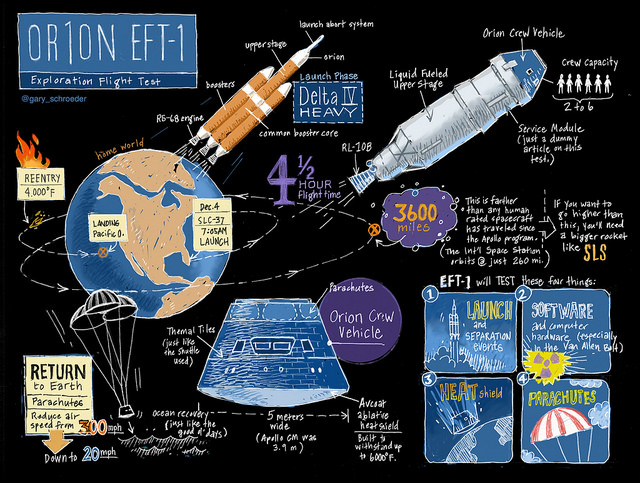
For many of us, it’s easier to comprehend complex processes when they are expressed visually. That was the impetus for artist Gary Schroeder in creating this wonderful hand-sketched infographic for NASA’s Exploration Flight Test 1 (EFT-1) for the Orion spacecraft.
“Being very interested in the follow-on program to the Shuttle, I wanted to pay close attention to exactly what was going to happen during the Orion launch from liftoff to splashdown,” Schroeder told Universe Today. “Drawing on my experience in sketchnoting (the practice of taking notes using both words and drawings), I thought an infographic-style sketchnote of EFT-1 would be fun to make. I made one study sketch in the morning based on some quick internet research, let it percolate in my head during the day, and came home after work to render a final version.”
Schroeder created the original artwork in pencil, then scanned it and colorized it in Photoshop.
He uploaded it to Flickr just yesterday and it already has nearly 14,000 views. “It’s been exciting for me to see so much interest in this drawing,” he said.
This just proves that sometimes a little bit of ‘throwback’ goes great with technology!
See more of Schroeder’s work on his Flickr page.
More about the Orion EFT-1 mission; the launch was scrubbed for today, but rescheduled for Dec. 5 starting at 7:05 am EST.

Wind gusts, an issue with valves on the Delta IV Heavy rocket, and an errant cruise ship all contributed to scrub the scheduled maiden test fight of NASA’s Orion spacecraft.
The launch team has tentatively rescheduled a new liftoff time of 7:05 a.m. EST on Friday, December 5 as the opening of a 2-hour, 39 minute window. Launch coverage will begin at 6 a.m. EST tomorrow on NASA TV. However, forecasts call for just 40% chance of acceptable weather conditions on Friday.
The test flight was scheduled from Launch Complex 37 at Cape Canaveral Air Force Station for a four-and-a-half-hour test flight of an uncrewed Orion spacecraft to Earth orbit. The countdown was halted twice when wind gusts exceeded limits. The countdown was also delayed when a boat entered restricted waters off the coast near the Launchpad.
Then, during a third launch attempt an issue with propellant valves on the Delta 4 Heavy’s first stage could not be resolved before the launch window closed.
The planned two-orbit Exploration Flight Test 1 (EFT-1) flight around Earth will lift the Orion spacecraft and it’s attached second stage to an orbital altitude of 3,600 miles, about 15 times higher than the International Space Station (ISS) – and farther than any human spacecraft has journeyed in 40 years. It will test several key systems on Orion, including electronics, the heat shield and parachutes.
Universe Today’s Ken Kremer is on hand in Florida and will provide continuing coverage of the test flight. You can also follow NASA’s Orion Blog for updates.
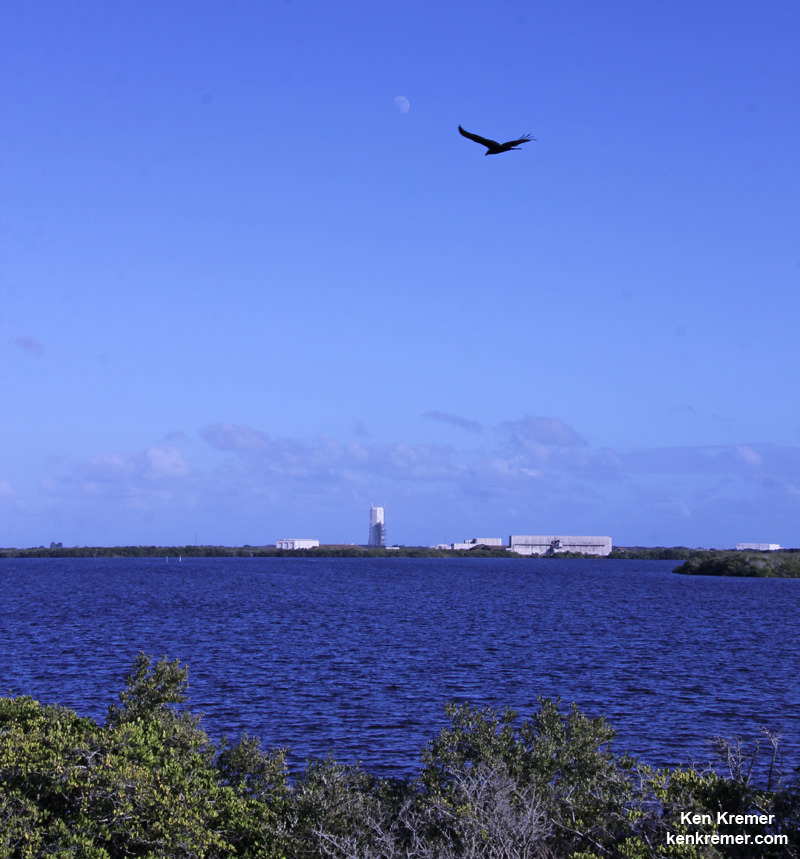
KENNEDY SPACE CENTER, FL – This week’s appearance of the Moon over the Kennedy Space Center marks the perfect backdrop heralding the start of NASA’s determined push to send Humans to Mars by the 2030s via the agency’s new Orion crew capsule set to soar to space on its maiden test flight in less than two days.
Orion is the first human rated vehicle that can carry astronauts beyond low Earth orbit on voyages to deep space in more than 40 years.
Top managers from NASA, United Launch Alliance (ULA), and Lockheed Martin met on Tuesday, Dec. 2, and gave the “GO” to proceed toward launch after a thorough review of all systems related to the Orion capsule, rocket, and ground operation systems at the launch pad at the Launch Readiness Review (LRR), said Mark Geyer at a NASA media briefing on Dec. 2.
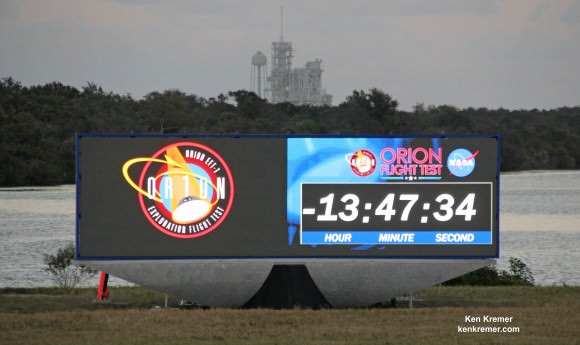
Orion is slated to lift off on a United Launch Alliance Delta IV Heavy rocket on its inaugural test flight to space on the uncrewed Exploration Flight Test-1 (EFT-1) mission at 7:05 a.m. EST on December 4, 2014, from Space Launch Complex 37 (SLC-37) at Cape Canaveral Air Force Station in Florida.
America’s astronauts flying aboard Orion will venture farther into deep space than ever before – beyond the Moon to Asteroids, Mars, and other destinations in our Solar System starting around 2020 or 2021 on Orion’s first crewed flight atop NASA’s new monster rocket – the SLS – concurrently under development.
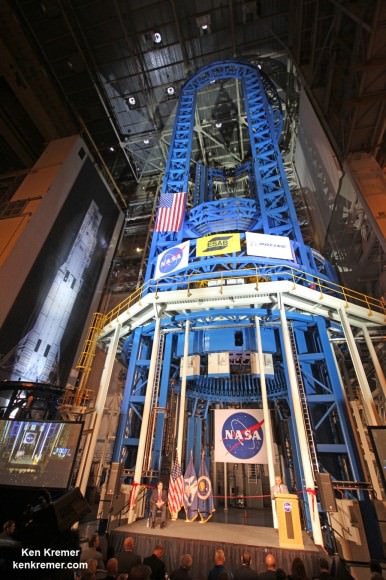
The current weather forecast states the launch is 60 percent “GO” for favorable weather condition at the scheduled liftoff time of at 7:05 a.m. on Dec. 4, 2014.
The launch window extends for 2 hours and 39 minutes.
The two-orbit, four and a half hour Orion EFT-1 flight around Earth will lift the Orion spacecraft and its attached second stage to an orbital altitude of 3,600 miles, about 15 times higher than the International Space Station (ISS) – and farther than any human spacecraft has journeyed in 40 years.
EFT-1 will test the rocket, second stage, and jettison mechanisms, as well as avionics, attitude control, computers, and electronic systems inside the Orion spacecraft.
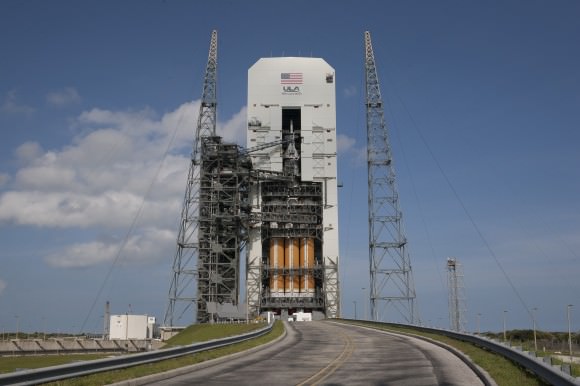
Then the spacecraft will carry out a high speed re-entry through the atmosphere at speeds approaching 20,000 mph and scorching temperatures near 4,000 degrees Fahrenheit to test the heat shield, before splashing down for a parachute assisted landing in the Pacific Ocean.
NASA TV will provide several hours of live Orion EFT-1 launch coverage with the new countdown clock – starting at 4:30 a.m. on Dec. 4.
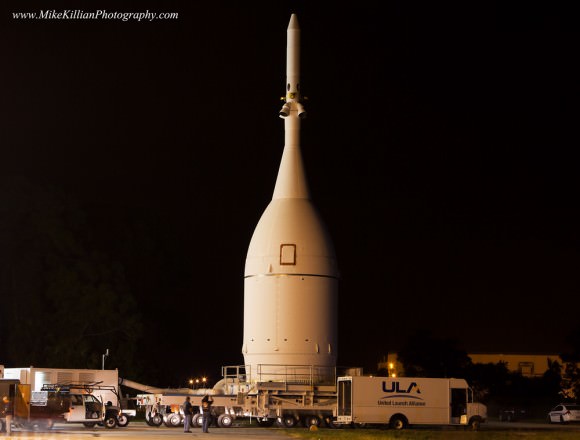
Watch for Ken’s ongoing Orion coverage and he’ll be onsite at KSC in the days leading up to the historic launch on Dec. 4.
Stay tuned here for Ken’s continuing Orion and Earth and planetary science and human spaceflight news.
Ken Kremer
………….
Learn more about Orion, SpaceX, Antares, NASA missions, and more at Ken’s upcoming outreach events:
Dec 1-5: “Orion EFT-1, SpaceX CRS-5, Antares Orb-3 launch, Curiosity Explores Mars,” Kennedy Space Center Quality Inn, Titusville, FL, evenings
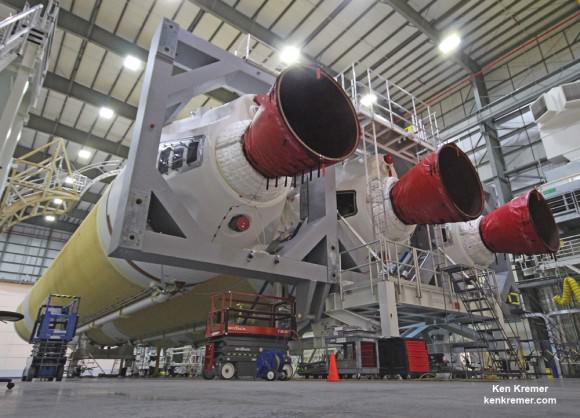
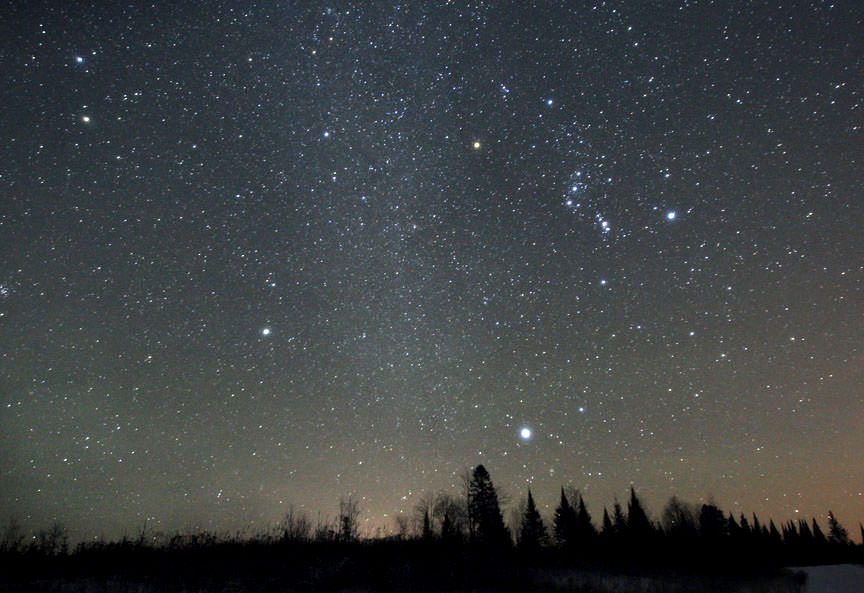
Several nights ago the chill of interstellar space refrigerated the countryside as temperatures fell well below zero. That didn’t discourage the likes of Orion and his seasonal friends Gemini, Perseus and Auriga. They only seemed to grow brighter as the air grew sharper.
Wending between these familiar constellations like a river steaming in the cold was the Milky Way. The name has always been slightly confusing as it refers to both the milky band of starlight and the galaxy itself. Every single star you see at night belongs to our galaxy, a 100,000 light-year-wide flattened disk scintillating with over 400 billion suns.

Earth, Sun and planets huddle together within the mid-plane of the disk, so that when we look straight into it, the density of stars piles up over thousands of light years to form a thick band across the sky. Since most of the stars are very distant and therefore faint, they can’t be seen individually with the naked eye. They blend together to give the Milky Way a milky or hazy look.

In a snowstorm, we easily distinguish individual snowflakes falling in front of our face, but looking into the distance, the flakes blend together to create a white, foggy haze. Replace the snowflakes with stars and you have the Milky Way – with a caveat. If we lived in the center of our galaxy, the sky would be milky with stars in all directions just like that snowstorm, but since the Sun occupies the flat plane, they only appear thick when our line of sight is aimed along the galaxy’s equator. Look above and below the disk and the stars quickly thin out as our gaze pierces through the galaxy’s plane and into intergalactic space.
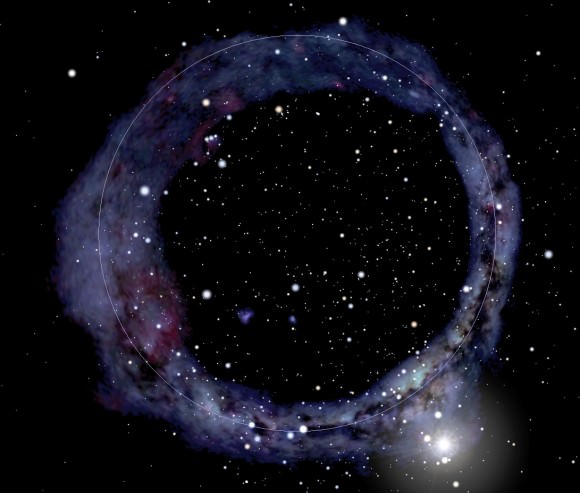
If you could float in space some distance from the brilliant ball of Earth, you’d see that the Milky Way band passes above, around and below you like a giant hula-hoop. Back on the ground, we can only see about two-thirds of the band over the course of a year. The other third is below the horizon and visible only from the opposite hemisphere, providing yet another good reason to make that trip to Tahiti or Ayers Rock in Australia.
Few know the winter version of the Milky Way that stands above the southeastern horizon around 10:30-11 p.m. local time on moonless nights in early December. No surprise, given it hardly compares to the brightness of the summertime version. This has much to do with where the Sun is located inside the galaxy, some 30,000 light years away from the center or more than halfway to the edge.
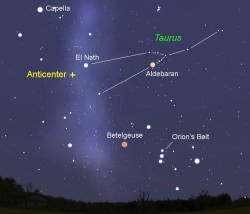
On late fall and winter nights, our planet faces the galaxy’s outer suburbs and countryside where the stars thin out until giving way to relatively starless intergalactic space. Indeed, the anticenter of the Milky Way lies not far from the star El Nath (Beta Tauri) where Taurus meets Auriga. While the hazy band of the Milky Way is still visible through Auriga and Taurus, it’s thin and anemic compared to summer’s billowy star clouds.
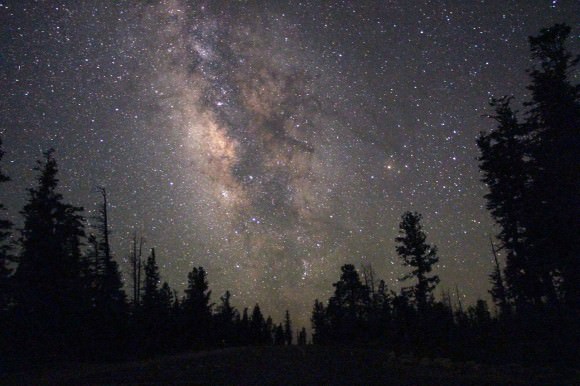
At nightfall in July and August, we face toward the galaxy’s center where 30,000 light years worth of stars, star clouds and nebulae stack up to fatten the Milky Way into a bright, chunky arch on summer evenings compared to winter’s thin gruel.
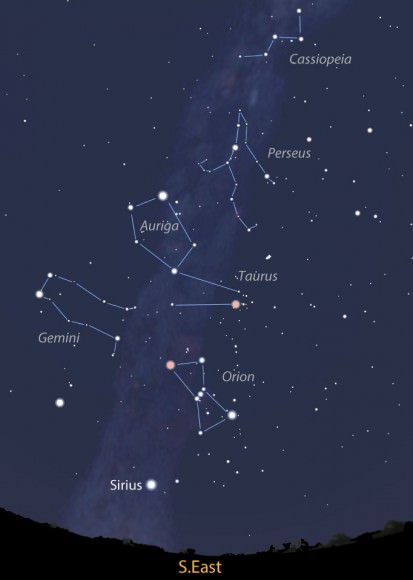
The winter Milky Way starts east of brilliant Sirius and grazes the east side of Orion before ascending into Gemini and Auriga and arching over into the western sky to Cassiopeia’s “W”. Binoculars and telescopes resolve it into individual stars and star clusters and help us appreciate what a truly beautiful and rich place our galactic home is.
Few sights that impress us with the scope and scale of where we live than seeing the Milky Way under a dark sky during the silence of a winter night. Picture Earth and yourself as members of that glowing carpet of stars, and when you can’t take the cold anymore, enjoy the delicious pleasure of stepping inside to unwrap and warm up. You’ve been on a long journey.
Host: Fraser Cain (@fcain)
Guests:
Morgan Rehnberg (cosmicchatter.org / @cosmic_chatter)
Brian Koberlein (@briankoberlein)
Ramin Skibba (@raminskibba)
Dave Dickinson (@astroguyz / www.astroguyz.com)
Continue reading “Weekly Space Hangout – Nov. 21, 2014: New Images of Europa”
Host: Fraser Cain (@fcain)
Guests:
Morgan Rehnberg (cosmicchatter.org / @cosmic_chatter)
Brian Koberlein (@briankoberlein)
Alessondra Springmann (@sondy)
Ramin Skibba (@raminskibba)
Continue reading “Weekly Space Hangout – Nov. 14, 2014: Holy Rosetta! We Landed on a Comet!”
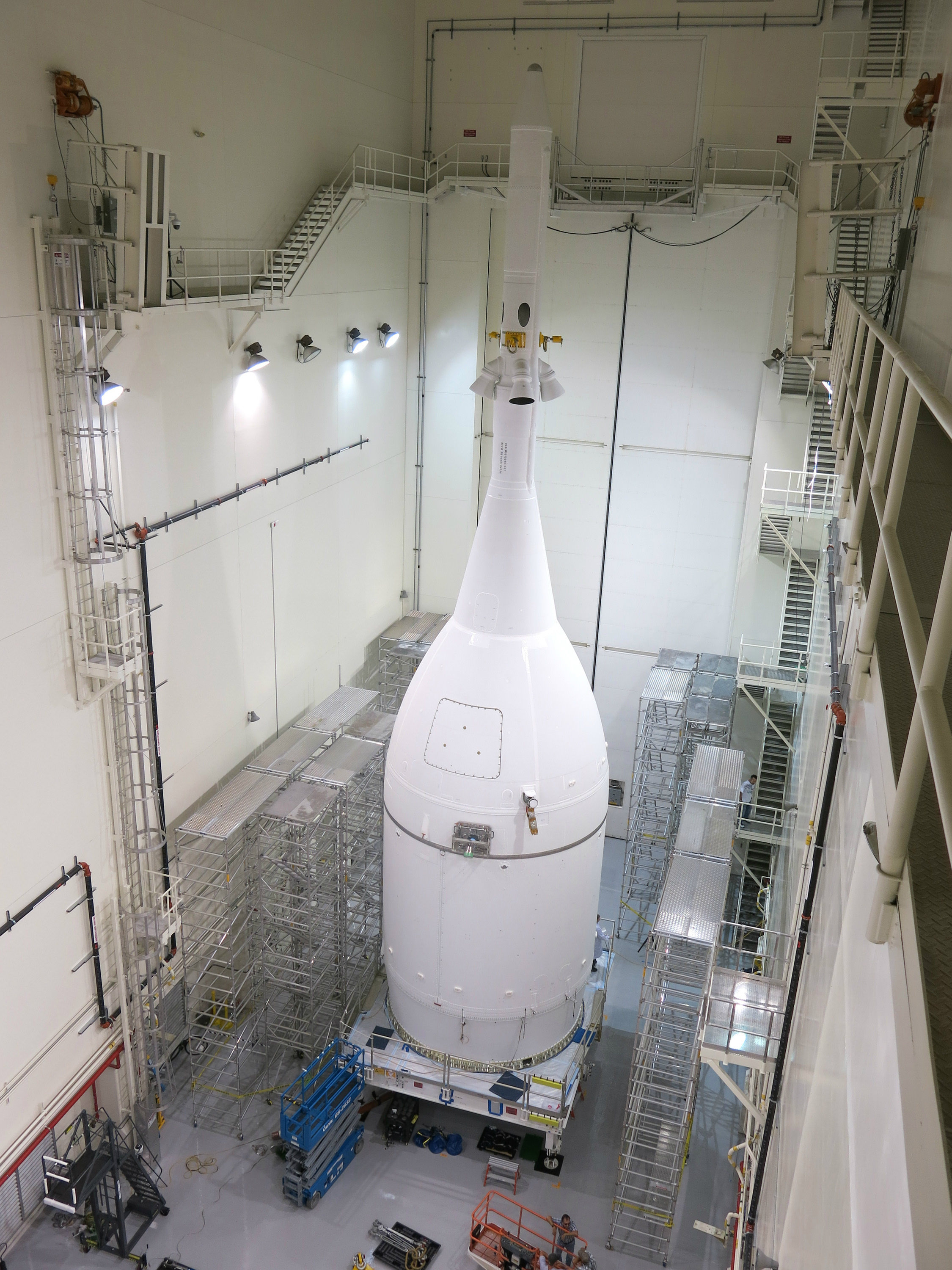
Technicians at the Kennedy Space Center have put the finishing touches on NASA’s first Orion crew module, marking the conclusion of NASA’s multi-year-long effort to build and prepare the vehicle for its maiden launch in December and take the first steps towards sending humans back to deep space in four decades since Apollo.
The Orion spacecraft is all set to be rolled out from Kennedy’s Launch Abort System Facility to Launch Complex 37 at Cape Canaveral Air Force Station on Monday evening, Nov 10.
Orion is slated to liftoff on its first unmanned orbital test flight, dubbed Exploration Flight Test-1 (EFT-1), on Dec. 4.
Orion is NASA’s next generation human rated vehicle that will eventually carry America’s astronauts beyond Earth on voyages venturing farther into deep space than ever before – beyond the Moon to Asteroids, Mars, and other destinations in our Solar System.
The fully assembled Orion vehicle stack consists of the crew module, service module, launch abort system and adapter, residing on a transporter in Kennedy’s Launch Abort System Facility.
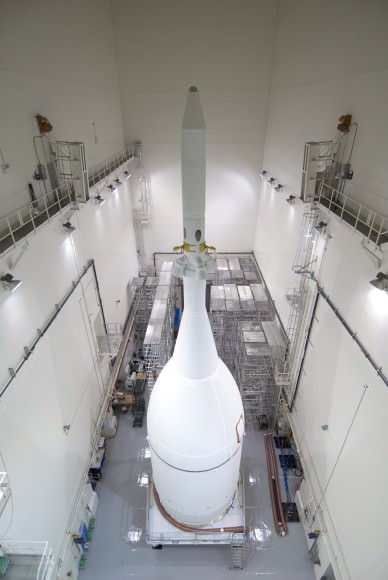
“This is just the first of what will be a long line of exploration missions beyond low earth orbit, and in a few years we will be sending our astronauts to destinations humans have never experienced,” said Bill Hill, deputy associate administrator for Exploration Systems Development, in a statement.
“It’s thrilling to be a part of the journey now, at the beginning.”
After arriving at pad 37, the Orion stack will be hoisted and installed atop the United Launch Alliance Delta IV Heavy rocket that will carry it into space for its uncrewed EFT-1 maiden flight test.
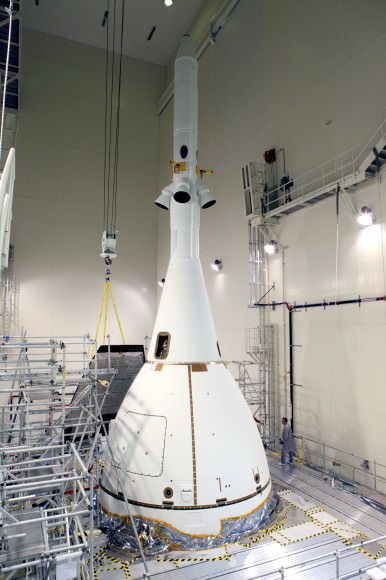
The maiden blastoff of the state-of-the-art Orion spacecraft on the EFT-1 mission is slated for December 4, 2014, from Space Launch Complex 37 (SLC-37) at Cape Canaveral Air Force Station in Florida atop the triple barreled United Launch Alliance (ULA) Delta IV Heavy booster.
The two-orbit, four and a half hour EFT-1 flight around Earth will lift the Orion spacecraft and its attached second stage to an orbital altitude of 3,600 miles, about 15 times higher than the International Space Station (ISS) – and farther than any human spacecraft has journeyed in 40 years.
It will test the avionics and electronic systems inside the Orion spacecraft.
Then the spacecraft will travel back through the atmosphere at speeds approaching 20,000 mph and temperatures near 4,000 degrees Fahrenheit to test the heat shield, before splashing down for a parachute assisted landing in the Pacific Ocean.
“NASA is pushing the boundaries of exploration and working hard to send people to Mars in the future,” said Mark Geyer, Orion Program manager, in a NASA statement.
“When we set foot on the Red Planet, we’ll be exploring for all of humanity.”
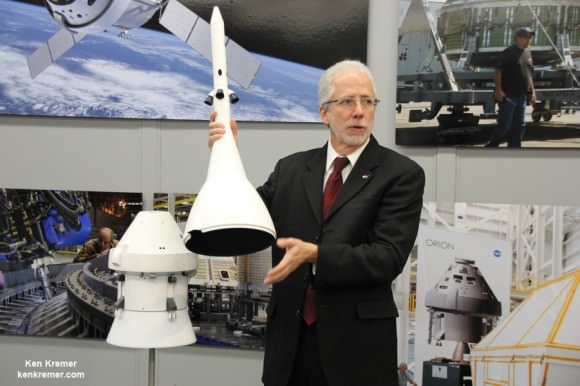
Watch for Ken’s Orion coverage and he’ll be at at KSC for the launch on Dec. 4.
Stay tuned here for Ken’s continuing Orion and Earth and planetary science and human spaceflight news.
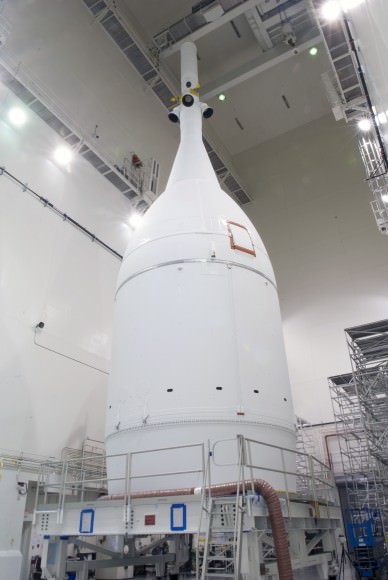
Host: Fraser Cain (@fcain)
Guests:
Ramin Skibba (@raminskibba)
Continue reading “Weekly Space Hangout – Oct. 24, 2014”

NASA is getting ready for the first test flight of the Orion crew vehicle, currently scheduled for December 4, 2014. “Before we can send astronauts into space on Orion, we have to test all of its systems,” says NASA engineer Kelly Smith in this new video released by NASA. “And there’s only one way to know if we got it right: fly it in space.”
Of course for Orion’s first test fight, no astronauts will be aboard. The spacecraft will be loaded with sensors to record and measure all aspects of the flight in detail. Orion is now in the final stages of preparation for the uncrewed flight that will take it 5,800 km (3,600 miles) above Earth on a 4.5-hour mission to test many of the systems necessary for future human missions into deep space.
Already the Delta IV Heavy rocket that will launch the test flight has been rolled to the launch pad, and the Orion capsule will be transported to the pad around November 10 or 11.
After launch, the spacecraft will make two orbits and then reenter Earth’s atmosphere at almost 32,000 km/hr (20,000 miles per hour), and reach temperatures near 2,200 degrees Celsius (4,000 degrees Fahrenheit), before its parachute system deploys to slow the spacecraft for a splashdown in the Pacific Ocean.